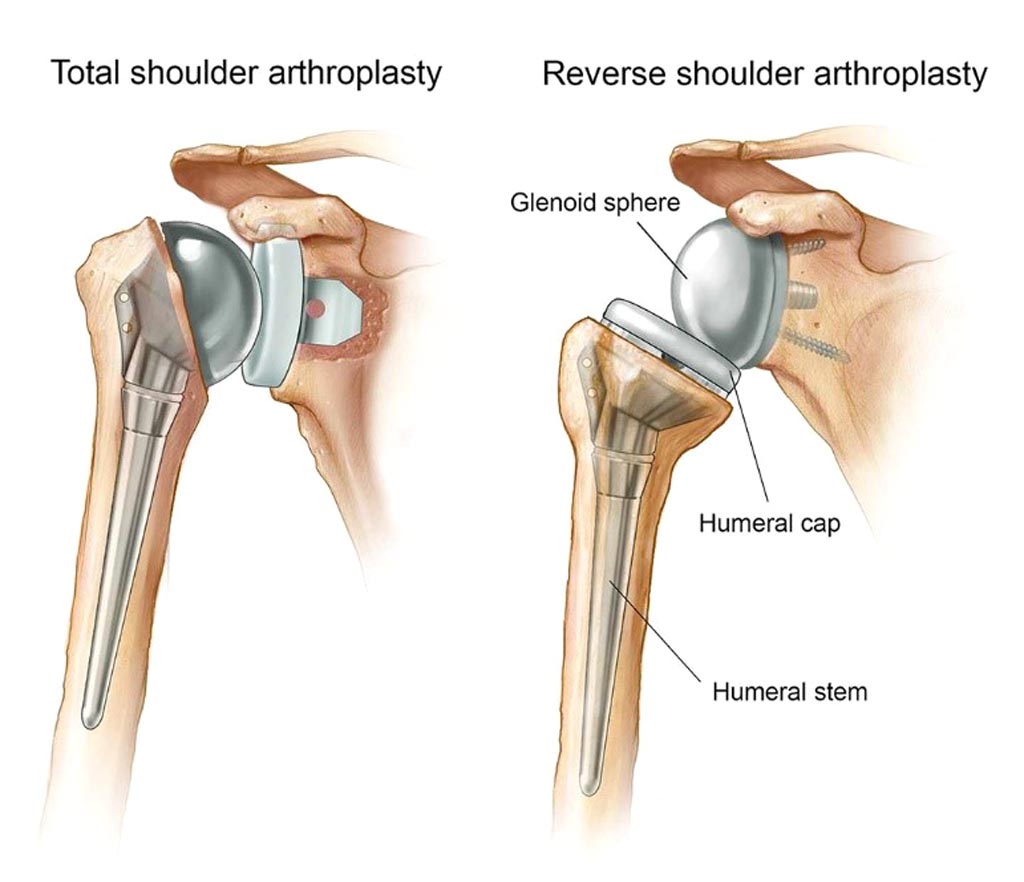Reverse Total Shoulder Arthroplasty Shows Stable Results
By HospiMedica International staff writers
Posted on 08 Nov 2017
A new study concludes that reverse total shoulder arthroplasty (RTSA) can provide substantial and lasting improvement in patients younger than 60 years with limited treatment options.Posted on 08 Nov 2017
Researchers at Balgrist University Hospital (Zurich, Switzerland) and the University of Zurich (UZH; Switzerland) conducted a study involving 20 patients (23 shoulders) with a mean age of 57 years, who underwent RTSA for massive, irreparable, tears of the rotator cuff muscles; the tears caused shoulder pseudoparalysis, resulting in little no ability to lift the arm. Fifteen of the shoulders (65%) had undergone previous non-arthroplasty surgery. The patients were evaluated at a mean 11.7 years later in order to analyze long-term outcomes and complications.

Image: According to a new study, reverse total shoulder arthroplasty is a good solution for irreparable rotator cuff tears (Photo courtesy of the Mayo Clinic).
The results revealed that most patients had substantial long-term improvement, with average constant score--a standard assessment accounting for shoulder motion, strength, daily activities, and pain--at the time of final-follow-up improving from 24 to 59 (out of 100). Patients' ratings of subjective shoulder value rose from 20% to 71%, with shoulder movement and strength increasing, and pain decreasing. Complications occurred in 39% of the shoulders, and further surgery was required in six shoulders; in two cases, the RTSA procedure was considered a failure. The study was published on October 18, 2017, in the Journal of Bone & Joint Surgery.
"In the absence of treatment alternatives, RTSA is a justifiable treatment for patients with a massive, irreparable rotator cuff tear before the age of 60,” concluded lead author Christian Gerber, MD, of the University of Zurich, and colleagues. “Despite a substantial risk of complications, most patients are satisfied with the outcomes of RTSA at follow-ups of a decade or longer.”
RTSA uses a convex glenoid (hemispheric ball) and concave humerus (articulating cup) to reconstruct the glenohumeral joint, which reverses the anatomical form of shoulder articulation. As a result, the center of rotation is moved inferiorly and medialized, allowing the deltoid to act on a longer fulcrum and have more mechanical advantage, so that it can substitute the deficient rotator cuff muscles in order to provide shoulder abduction. RTSA can be combined with latissimus dorsi transfer to assist with external rotation.
Related Links:
Balgrist University Hospital
University of Zurich














